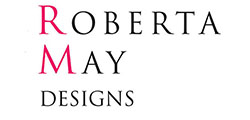History and Information
Ceramics
M is for Maiolica
The term 'MAIOLICA' was used in the 15th-century Italy for lustrewares imported from Spain.
It is often said that the name 'Maiolica' comes from Majorca, an island off of Spain Majorca which is the largest of the Balearic Islands. The island played an important part in the lustreware trade. Recently it's been argued that the name derives from 'obra de Mallequa', the term for lustred ware made in Valencia under the influence of Moorish craftsmen from Malaga.
The name was soon adopted for Italian-made lustre pottery copying Spanish examples, and during the 16th century, its meaning shifted to include all tin-glazed earthenware.
In the late 18th and 19th centuries, Italian Renaissance maiolica became increasingly popular among collectors and museums in Britain. At first it was referred to, romantically, as Raffaelle ware or Urbino ware, but soon also with the anglicised term 'majolica'.
In the mid 19th century, the term 'majolica ware' was also used by the Minton factory for their newly introduced, painted tin-glazed earthenwares. But at the Great Exhibition of 1851 Minton launched colourful lead-glazed earthenwares in neo-Renaissance or naturalistic forms called 'Palissy-ware'. Gradually the title 'Palissy' was dropped and by the 1880s the name 'majolica' was instead commonly used to describe this popular colourful ware.
In the early 1870s, the curators of the South Kensington Museum returned to the original Italian 'maiolica' with an 'i' to describe all Italian tin-glazed earthenware, doubtless to stress the Italian pronunciation and to avoid confusion with contemporary majolica.
